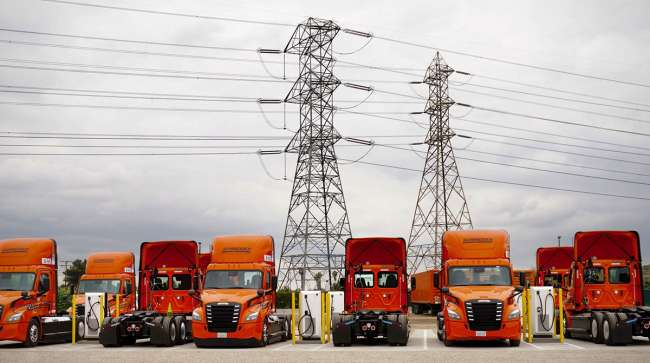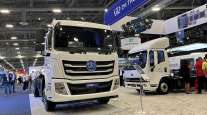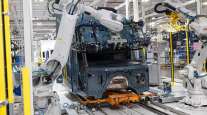Staff Reporter
Report Finds Opportunities, Obstacles for Electric Vehicles

[Stay on top of transportation news: Get TTNews in your inbox.]
The trucking industry is seeing increasing opportunities to deploy electric vehicles despite obstacles that still must be overcome, according to a report July 9.
The North American Council for Freight Efficiency and RMI documented the commercial operation of 22 battery-electric vehicles for three weeks last September. The vehicles came from several fleets and ranged from Class 2b through Class 8. The “Run on Less — Electric DEPOT: Scaling BEVs in the Real World” report that followed found that electric vans, trucks and heavy-duty tractors are being deployed across many different duty cycles.
“One of the key points to looking at electric vehicles is that there’s this tendency to immediately gravitate towards all trucks are longhaul, and they’re all operating at 80,000 pounds,” said Rick Mihelic, director of emerging technologies at NACFE. “The reality is, that is less than 10% of the marketplace. There are a lot of vehicles that operate at duty cycles less than 100 miles, less than 200 miles, less than 300 miles, of different classes.”
The report highlighted several factors to determine whether lower-emission vehicles fall into an optimum duty cycle sweet spot. Those factors include freight payload, range and type of power source. Battery-electric, for instance, has an optimum duty cycle that has a limited range of 250 miles and 43,000 pounds of freight.
“The report goes into some detail about the fact that there’s just a great deal of opportunity for electric vehicles to fill needs today, and the vehicles are out there,” Mihelic said. “We already have something on the order of 40 manufacturers producing well over 160 models of vehicles. The vehicles are there, the infrastructure is starting to be there, the standardization is starting to be there, and we just need to not confuse the argument by focusing on the 10% of the vehicles at the bottom of this deck.”
Frito-Lay, OK Produce, Penske, PepsiCo Beverages, Performance Team Logistics, Purolator, Schneider, UPS, US Foods and WattEV were the fleet depots that participated in the study. The performance of each electric truck was tracked with telematics devices before being provided to researchers. NACFE also performed site visits and interviewed people involved.a

"We need to be focusing on building out more infrastructure to support all these vehicles," says Rick Mihelic, NACFE's director of emerging technologies. (John Sommers II for Transport Topics)
“Fundamentally, what we found in the deeper dive of the data over the last several months, by us and by several other independent parties, was that our initial findings were spot on,” Mihelic said. “We definitely have shown that electric vehicles are here, smaller depots are ready to be electrified today. There are still some challenges and definitely opportunities for technology improvements.
“Clearly, we’re in the midst of rolling out the initial vehicles, and we need to start iterating on those to make them better and less expensive. And we need to be focusing on building out more infrastructure to support all these vehicles.”
The makers of Transport Topics' updated Top 100 For-Hire Carriers list examine how the freight market slump has altered the competitive landscape in trucking. Tune in above or by going to RoadSigns.ttnews.com.
The report noted that the majority of Class 2b through Class 8 vehicles that operate in urban and regional hauls are used primarily in one-shift operations driving less than 250 miles per day and are parked for extended periods between work shifts. It concluded that despite there being exceptions, utilization can be near 24/7 continuously with only short dwell times.
“We can simplify it down to some four basic areas,” Mihelic said. “Electric trucks are definitely on the road today, and they are performing well. We have quite a few vehicles that are in series production. We’re starting to see the next generation of vehicles that have been starting to incorporate the learnings from the first vehicles.”
Want more news? Listen to today's daily briefing above or go here for more info
Mihelic pointed to the Volvo VNL Electric as an updated electric vehicle that incorporated lessons learned from the earlier version. It now also includes sleeper versions focused on regional haul. He notes there are still problems to overcome, but there are several fleets and many independent organizations working to address issues like infrastructure.
“One of the other findings is that all these vehicles have tremendous opportunity for weight reduction and cost reduction,” Mihelic said. “The natural progression with all OEM products is that once they get launched, they immediately go into cost-reduction and weight-reduction exercises. That persists through the rest of the life of those models. I’ve worked for a long time for OEMs, and that occupies engineers at every facility.”





